
10.1 million. That’s the estimated number of Americans aged 12 or older who misused opioids in 2019.
There were an estimated 75,673 opioid overdose deaths that occurred from April 2020 through April 2021.
What are we doing about these alarming statistics? The FDA has approved three drugs to treat opioid dependence. Buprenorphine – sold under the brand name Suboxone – is one of them.
Here’s how it works and what researchers have discovered.
Suboxone 101
 Suboxone is an opioid partial agonist. An agonist is a chemical that triggers a response in the body. This drug only partly activates rather than fully. So its effects are weaker than substances like heroin or morphine (which are full agonists).
Suboxone is an opioid partial agonist. An agonist is a chemical that triggers a response in the body. This drug only partly activates rather than fully. So its effects are weaker than substances like heroin or morphine (which are full agonists).
The drug also has a ceiling effect. This means higher doses don’t increase its effects. And, it’s long-acting, so people don’t have to take it every day.
This makes Suboxone a go-to drug for medication-assisted treatment (MAT) for opioid use disorder.
This medication can:
- Diminish the effects of physical dependency on opioids, such as withdrawal symptoms and cravings
- Increase safety (reduce the chances of overdose)
- Lower the potential for drug abuse
Ultimately, this can help people withdraw from opioids like heroin and reduce people’s use.
If it is taken as prescribed, buprenorphine is reported to be safe and effective.
How long someone takes buprenorphine varies with each case. Treatment can range from short-term to indefinite.
MAT 101
The US Department of Health and Human Services reports that 1.27 million Americans are now receiving medication-assisted treatment for opioid use disorder (OUD). This combines medication like buprenorphine with counseling and behavioral therapies. This creates a comprehensive treatment plan that treats the whole person.
Research has shown that this combination can successfully treat opioid use disorders and help sustain recovery.
SAMSHA states the ultimate goal of MAT is “full recovery, including the ability to live a self-directed life.”
Does It Work?
Researchers recently dug into results from drug tests to find out.
Brendan Saloner, PhD, is an associate professor at Johns Hopkins Bloomberg School of Public Health. Together with researchers from Millennium Health, he published their findings in JAMA Network Open.
These investigators analyzed 150,000 urine drug test results for OUD patients. The patients were prescribed Suboxone between 2013 and 2019. Researchers wanted to find out if the presence of Suboxone made it less likely for a person to misuse opioids.
Of their 150,000 results, 85.49 percent were positive for buprenorphine. Just under half (47.58 percent) were positive for at least one non-prescribed substance.
They discovered that patients who tested negative for prescribed buprenorphine “were significantly more likely” to test positive for other substances, compared to those who tested positive for buprenorphine.
Specifically, they found:
- Those who tested negative for buprenorphine were 10 times more likely to test positive for heroin.
- Those who tested negative for buprenorphine were seven times more likely to test positive for fentanyl.
In other words, the results indicate that if the patients stuck with their treatment, they were less likely to abuse other drugs. And, that if they stopped taking their medication, they were much more likely to turn to other drugs.
More Good News for Suboxone
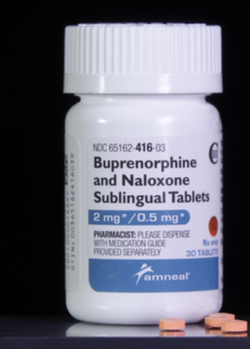
Credit: Kzenon, Rido, Syda Productions, Victoria Ashman, Rawpixel.com, fizkes, Dragon Images, Simone Hogan
Other research supports the theory that Suboxone can be an effective treatment for addiction. One meta-analysis of buprenorphine use found that doses of this medication improved retention in treatment and that high doses reduced opioid use.
And through other research, MAT has been shown to:
- Increase treatment retention
- Increase patients’ ability to remain employed
- Decrease illicit opioid use and other criminal activity among those with SUDs
- Improve patient survival
Call 800-934-1582(Sponsored) to learn more about available treatment options near you.

You say tomato. I say tomahto.
You say oxycodone. I say Percocet. Same difference, right?
Actually, no. The two drugs do have some similarities, but when comparing opioids, the terms are not interchangeable.
Let’s talk about how they differ.
Chemical Makeup
 Both of these drugs are opioid pain medications. Oxycodone is a synthetic drug made from opium. Percocet is made of oxycodone and acetaminophen. (Acetaminophen is another painkiller, which you probably know by its brand name: Tylenol.)
Both of these drugs are opioid pain medications. Oxycodone is a synthetic drug made from opium. Percocet is made of oxycodone and acetaminophen. (Acetaminophen is another painkiller, which you probably know by its brand name: Tylenol.)
If you take either of these drugs, you’re taking oxycodone. But when you take Percocet, you’re also getting the second medication, acetaminophen. This is one of the primary reasons oxycodone and Percocet get confused when comparing opioids.
Oxycodone is a generic drug, which is sold under several brand names. Percocet is one if the brand name drugs made with oxycodone.
Oxycodone and Percocet Use
Oxycodone is available in three different forms, which are used for different types of treatment:
- Immediate-release tablets enter the bloodstream right away
- Extended-release tablets gradually release the drug into the bloodstream
- An oral solution, often given through a gastric tube, is available for patients who can’t swallow tablets
Oxycodone is used for treating moderate to severe pain. The extended-release form is often prescribed for patients who have ongoing pain, such as cancer-related issues.
Percocet is also prescribed to treat moderate to severe pain. But it is used for treating conditions that also cause a fever because acetaminophen is a fever reducer. It may also be used to treat patients who experience pain while on another long-acting painkiller.
Percocet is not recommended for long-term use, since the acetaminophen in it can wreak havoc on the liver and cause serious damage over time.
Effectiveness
Both drugs are proven to effectively relieve pain. When you take Percocet or immediate-release oxycodone, you start to feel relief within half an hour, and the effects usually last for three to six hours.
Extended-release oxycodone starts to work within two hours and continues to relieve pain for up to 12 hours. The brand name drug OxyContin is a type of extended-release oxycodone.
Over time, patients can develop tolerance to these drugs. This means they need higher doses to get the same pain relief. Tolerance can begin to develop within just one week of taking regular doses of either drug.
Side Effects
Since we’re comparing opioids with the same primary ingredient, both oxycodone and Percocet naturally have similar side effects.
Both commonly cause:
- Constipation
- Sleepiness
- Calmness
- Nausea
- Dizziness
- Loss of appetite
- Headache
- Impaired motor skills
There are two main differences in their side effects:
- Oxycodone is more likely to cause feelings of euphoria
- Percocet can cause abdominal pain, black stools, and yellowing of the skin (jaundice) because of its effect on the liver
One of the biggest potential side effects of either drug is addiction. Tolerance can happen quickly and lead to physical and psychological dependence, so “>both drugs are considered highly addictive.
Drug Classification
Here’s an area where the two drugs don’t differ. The Drug Enforcement Administration (DEA) classifies drugs into five categories or “schedules.” A drug’s class is determined by its potential for dependency and its accepted medical use.
Both oxycodone and Percocet are Schedule II drugs.
Schedule II substances have “a high potential for abuse, with use potentially leading to severe psychological or physical dependence.” They are considered dangerous.
Other examples of Schedule II drugs include methamphetamine, cocaine, fentanyl, and Ritalin.
Pop Quiz
 Here’s a quick quiz comparing oxycodone and Percocet. Don’t worry – you won’t be graded!
Here’s a quick quiz comparing oxycodone and Percocet. Don’t worry – you won’t be graded!
Match the following descriptions with the correct drug. (Hint: Some are true for both substances.)
- An opioid
- Contains acetaminophen
- Relieves pain
- Is considered addictive
- Comes in an extended-release form
- Can cause drowsiness
- Reduces fever
- Is not recommended for long-term use
- Tolerance can develop in 7 days
- A Schedule II narcotic
How’d you do? You can check your answers below.
And remember, if you’re trying to decide which medication is best for your situation, always consult with a doctor and use the drug only as prescribed.
If you need help with drug abuse, call 800-934-1582(Sponsored) .
Pop Quiz Answers:
- Both
- Percocet
- Both
- Both
- Oxycodone
- Both
- Percocet
- Percocet
- Both
- Both
 Tina and Melinda are both addicted to opioids. Both of these women are paying for suboxone treatment for their opioid use disorder.
Tina and Melinda are both addicted to opioids. Both of these women are paying for suboxone treatment for their opioid use disorder.
Tina has private insurance. Melinda has Medicaid coverage.
Which of these two women is more likely to get an appointment? Will providers discriminate when it comes to the method for paying for suboxone treatment?
That’s what researchers wanted to find out. So, they used “secret shoppers” to get answers.
Investigators from Baylor University’s Hankamer School of Business, RAND Corporation, and Vanderbilt University Medical Center’s Departments of Pediatrics and Health Policy collaborated on the study.
Here’s what they discovered.
It’s Hard for Anyone to Get an Appointment
 Researchers made 3,420 simulated patient calls for the study. The callers identified themselves as women with Medicaid coverage or private insurance coverage. All were requesting appointments with buprenorphine providers.
Researchers made 3,420 simulated patient calls for the study. The callers identified themselves as women with Medicaid coverage or private insurance coverage. All were requesting appointments with buprenorphine providers.
Guess how many successfully landed an insurance-covered appointment? Less than half. Even with Medicaid or private insurance.
Only 45 percent of women with private insurance coverage were able to get an appointment. And just 38 percent of women with Medicaid insurance were as well.
According to the study’s lead author Michael Richards, MD, PhD, MPH, and associate professor at Baylor University in Waco:
The most striking finding is — for both callers that had private insurance and callers that had Medicaid — just how infrequently they’re able to actually leverage those insurance benefits when it comes to getting an appointment for opioid use disorder. That really speaks to the many serious and substantive access hurdles these individuals have to clear.
It’s Harder for Medicaid Patients…in Certain Areas
Previous research has shown significant differences in access to opioid use disorder treatment between patients with Medicaid versus private insurance. And this study was no different.
However, researchers discovered that these results varied based on one key factor.
Researchers found that callers with Medicaid were 11 percent less likely to get an appointment if Medicaid coverage was not common in the surrounding community.
But, as the percentage of Medicaid coverage in the local community went up, so did the number of Medicaid patients getting appointments.
In areas where Medicaid coverage was prevalent enough, the difference in access to care was insignificant.
Causes of Discrimination in Paying for Suboxone Treatment
Investigators can’t say for sure what is causing this disparity. They suspect it might be as simple as paperwork issues.
According to the study findings, providers in areas with a higher rate of Medicaid coverage may be more familiar with business processes needed to obtain payment from Medicaid for buprenorphine treatment.
But the problem is most likely multifaceted, they admit.
Whatever the issues are, researchers suggest that these findings guide future efforts. They advise, “Efforts to improve access to treatment may be best targeted to areas where Medicaid prevalence is lower.”
MAT Numbers Remain Low
 In 2020, nearly 70,000 people in the United States died from opioid overdoses. Currently, buprenorphine is one of three medication-assisted treatments (MAT) approved by the World Health Organization and the FDA to treat opioid use disorder. This medication can help diminish withdrawal symptoms and cravings.
In 2020, nearly 70,000 people in the United States died from opioid overdoses. Currently, buprenorphine is one of three medication-assisted treatments (MAT) approved by the World Health Organization and the FDA to treat opioid use disorder. This medication can help diminish withdrawal symptoms and cravings.
This, in turn, lowers the potential for opioid misuse.
The number of clinicians who can prescribe buprenorphine has increased 300 percent. But less than 33 percent of individuals with opioid use disorder receive any kind of MAT. Researchers hope their efforts can make a change in these numbers.
“Making it through the structural barriers to just getting into treatment for opioid use disorder is extraordinarily hard, even if you’re the most motivated person on the planet,” says study principal investigator Stephen Patrick, MD, MPH. He’s from the department of health policy at Vanderbilt University Medical Center in Nashville, Tennessee.
“We are seeing record-setting rates of overdose death, and for every overdose death, there are a slew of other hospitalizations and additional family members affected. I hope our continued research garners the attention of the public and policymakers and more clearly communicates that we must put solutions in place to break down these barriers.”
Call 800-934-1582(Sponsored) now to learn more about the available treatment options in your area.
 Over 93,000 Americans died from an opioid overdose in 2020, which is a 30 percent increase from the previous year. The effects of fentanyl are the root cause behind this increase. It is a powerful synthetic opioid that is infiltrating the drug supply.
Over 93,000 Americans died from an opioid overdose in 2020, which is a 30 percent increase from the previous year. The effects of fentanyl are the root cause behind this increase. It is a powerful synthetic opioid that is infiltrating the drug supply.
Americans are buying other drugs, like cocaine or benzodiazepines, that have been laced with fentanyl. Because the effects of fentanyl are so powerful, it is killing record numbers of unsuspecting Americans.
Fentanyl is not only potent but also difficult to identify. Given the social restrictions and heightened stress during the pandemic, more and more people had been susceptible to this deadly drug.
In this blog, we’ll explain why fentanyl is so dangerous, how to spot it in your drugs, and what to do if you suspect someone is having an opioid-related overdose.
What Is Fentanyl?
Fentanyl is a powerful synthetic opioid that is 50 times stronger than heroin and 100 times stronger than morphine. It has been used medicinally to treat chronic pain following surgery or in patients with cancer since 1968. Fentanyl is also illicitly manufactured for the drug market for those seeking a more powerful high than heroin.
Street fentanyl is either injected in its liquid form, smoked, or inhaled. Street names for fentanyl include:
- Murder 8
- Apache
- Dance Fever
- Jackpot
- Friend
- Goodfellas
- Tango and Cash
The typical effects of fentanyl are similar to heroin, and include:
- Euphoria
- Relaxation
- Pain relief
- Sedation
- Confusion
- Nausea and/or vomiting
- Dizziness
- Drowsiness
- Pupil constriction
- Risk of overdose and death
There is another contributing factor to the rise in fentanyl use. Drug manufacturers are cutting other drugs with fentanyl to cut down on costs while making the laced drugs more powerful and addictive.
What Does Fentanyl Look Like?
Prescription fentanyl is usually a patch worn on the skin. Illicitly manufactured fentanyl is available in a powder or liquid form. The powder is either white, gray, or tan-colored.
Unfortunately, when fentanyl is powdered, it’s difficult to differentiate it from other powdered drugs, like cocaine. And the liquid can be hidden in unassuming everyday items like nasal sprays, eye drops, and even candy.
Why Is Fentanyl So Dangerous?
According to the CDC, fentanyl and other synthetic opioids are the most common drugs involved in overdose deaths.
The CDC reports that over 150 people die from opioid overdoses from synthetic opioids like fentanyl every day.
The problem with fentanyl is two-fold: Its potency and the incentive of illicit drug manufacturers to cut other drugs with fentanyl to make more money.
People are buying illicit drugs like methamphetamine, cocaine, heroin, and pills (like opioids and benzodiazepines) completely unaware that their drugs are contaminated with fentanyl. What’s more, the amount of fentanyl in the drug could be a lethal dose that you can’t taste, smell, or see.
To make matters worse, rates of fentanyl infiltrating the drug supply continue to rise.
According to the Office of National Drug Control Policy, the rate of fentanyl-related overdoses has risen six-fold since 2014.
Fentanyl was involved in a staggering 62 percent of opioid deaths in 2020. Illicit manufacturers have been able to achieve exponential distribution across the country.
Previously, fentanyl was common in the northeast, midwest, and mid-Atlantic and now it is showing up in other parts of the country.
Why Did Overdose Deaths Surge During the Pandemic?
Fentanyl-related deaths have also been exacerbated by the pandemic. People struggled to access harm reduction programs that enabled them to test their drugs and access recovery resources.
This led many to return to using to cope with the stress, anxiety, and social isolation of the pandemic.
While the pandemic is beginning to wane, many people are burned out and struggling to cope with the economic burdens and the loss of loved ones that the pandemic left in its wake. These factors alone are a risk for overdose but taken together, they reflect one of the many tragedies of COVID-19 — the staggering rise of overdose deaths.
How Much Fentanyl Is Fatal?
It takes just two milligrams of fentanyl to kill, according to the Drug Enforcement Administration (DEA). You may think you’re safe because you don’t take opioids, but you’d be mistaken.
In recent seizures, the DEA found that 42 percent of counterfeit pills contain 0.2 to 5.1 milligrams of fentanyl.
Fentanyl is usually distributed by drug organizations by the kilogram. This amount could kill a staggering 500,000 Americans.
What Are the Signs of an Overdose?
Whether you’re taking a prescribed opioid, or an illicit substance, you should be aware of the signs of overdose because you could save someone’s life.
The common signs of overdose the CDC advises to look out for include:
- Shallow, weak, or no breathing
- Small pinpoint pupils
- Falling asleep or losing consciousness
- Limp body
- Choking or gurgling sounds
- Cold and/or clammy skin
- Discolored skin, especially on the lips and nails
What to Do If You Think Someone Is Overdosing
If you suspect someone is overdosing you should act quickly, by:
- Calling 911 immediately
- Administering the overdose reversal drug, naloxone
- Try to keep the person awake and breaking
- Lay the person on their side to prevent choking
- Stay with the person until the emergency services arrive
Naloxone (or brand name Narcan) is available in all 50 states. It is available from most pharmacies without a prescription. You can also get it for free from many recovery centers, outreach, and harm reduction programs.
It is very simple to use and will save a life.
How Can I Check My Drugs for Fentanyl?
It is possible to test your drugs for fentanyl and other potent opioids like carfentanil by using fentanyl test strips. You can either buy or find it at your nearest harm reduction service center. The test takes just 5 minutes and could save you from the harmful effects of fentanyl.
Fentanyl Myths
On TV dramas, cops come out in hazmat suits because they fear they’ll die from touching fentanyl. However, much of the media has misrepresented what happens when you come into contact with fentanyl.
The Harm Reduction Coalition has dispelled many of these myths, such as:
- You cannot overdose by simply touching powdered fentanyl. It must either enter your bloodstream or mucus membrane — body cavities like the nose, mouth, lungs, and stomach — for you to feel any of the effects of fentanyl.
- Fentanyl and its analogues, such as carfentanil, are not resistant to naloxone. Fentanyl is an opioid and therefore naloxone will respond to a fentanyl-related overdose. When people don’t respond to naloxone, it is because you haven’t waited long enough. (Fact: You need to wait two to three minutes. After, if still unresponsive, the person needs more than one dose).
- Fentanyl patches are not the same formulation as illicitly manufactured fentanyl. They are specially formulated for pain management — it takes 12 to 24 hours to receive adequate pain relief.
Ways to Reduce the Risk of Overdose from the Effects of Fentanyl
 While treatment is the preferred course of action for addiction, you may not be ready for recovery. Or, you may be concerned for a loved one who uses alone.
While treatment is the preferred course of action for addiction, you may not be ready for recovery. Or, you may be concerned for a loved one who uses alone.
This is where harm reduction practices apply. The following precautions can reduce the risk of overdose:
- Always carry naloxone
- Eat, drink, rest, and hydrate as best you can
- Make an overdose plan with a friend
- Use less and more slowly because fentanyl is very powerful
- Test your drugs
- Use one drug at a time
- Avoid taking alcohol with opioids
- If you do use alone, ensure someone knows where you are
- Be cautious of your tolerance, especially if you have recently taken a break from drug use. If in doubt, try a tester amount
- Use a different method of ingestion, such as snorting instead of injecting
If you or someone you love is experiencing a substance use disorder, help is available. Call 800-934-1582(Sponsored) today.
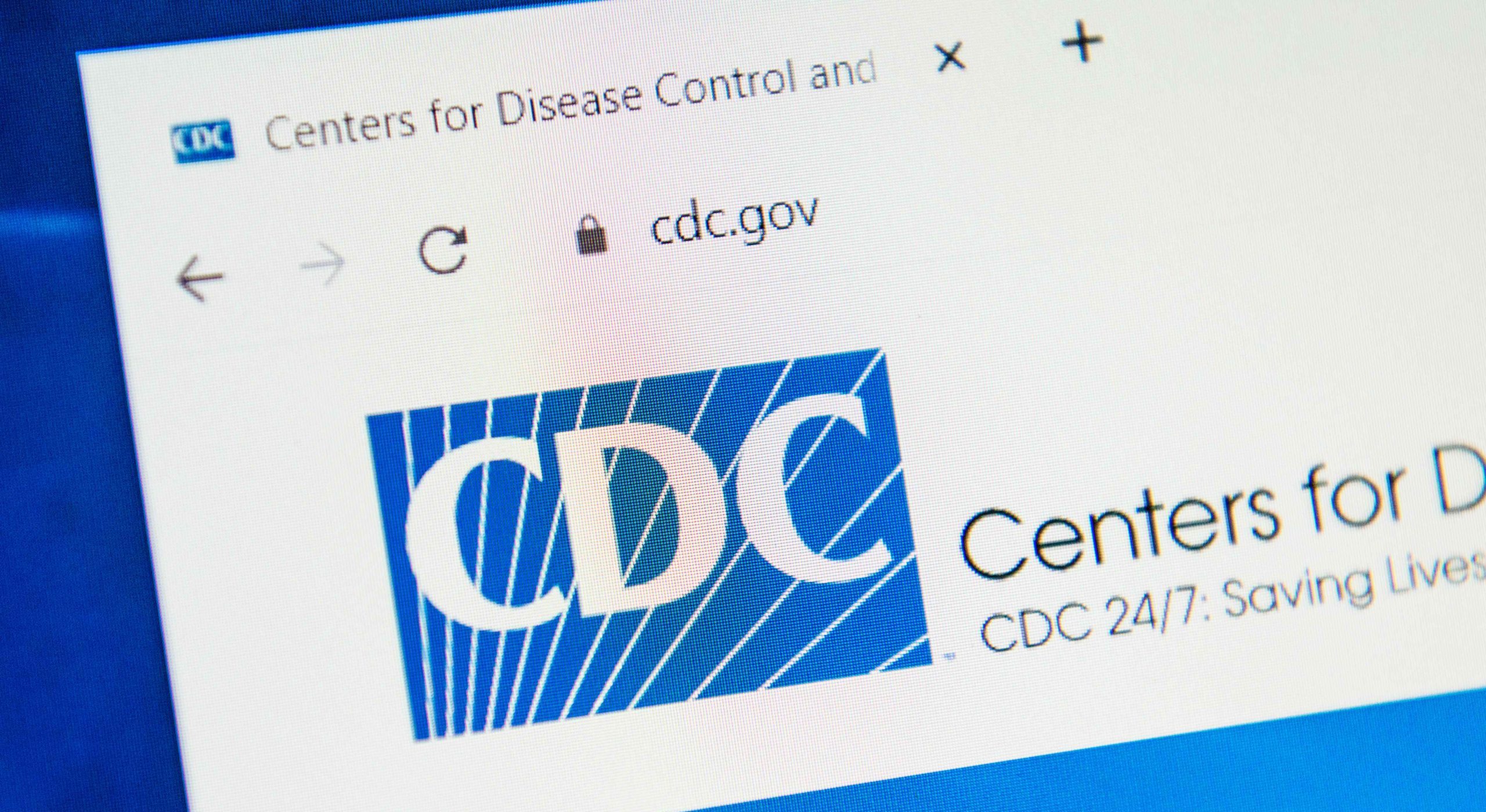
A lot has changed when it comes to prescription opioids and how they’re prescribed.
It’s been six years. Six years since the CDC released its Guideline for Prescribing Opioids for Chronic Pain. So, why did the CDC decide to propose an update this year? What compelled the organization to take action now?
Let’s take a trip back to 2016 to find out.
Headed Toward Disaster
 Over the course of two decades, use of prescription opioids in the U.S. drastically increased. The result? A full-blown opioid epidemic.
Over the course of two decades, use of prescription opioids in the U.S. drastically increased. The result? A full-blown opioid epidemic.
Thousands of people became addicted to painkillers. And when they grew desperate to feed their addiction, many of them progressed from prescription painkillers to illicit drugs like heroin.
Realizing the dangers, healthcare providers began to cut back on opioid prescriptions by 2012. But the damage was already done.
Opioid addiction and opioid overdose numbers skyrocketed. And what’s worse, the numbers kept climbing.
In 2016, the officials finally decided something had to change. The CDC stepped in with official prescribing guidelines, which later became known as the 2016 CDC Guideline for Prescribing Opioids for Chronic Pain. These guidelines were designed to reduce dependence on opioids and lower the risk of overdose.
After releasing the CDC guidelines, opioid laws began to change. Many states limited opioid prescriptions for acute pain to no more than seven days. Some states also limited prescriptions for Medicaid patients.
Insurance companies and pharmacies also set their own limits. Doctors began to taper long-term patients off opioids. Medical boards sanctioned doctors who didn’t adhere to the guidelines. Opioid prescriptions decreased.
Were all these actions helpful? That depends on who you ask.
Prescription Opioids: Too Strict or Too Misunderstood?
Some doctors, patients, and drug manufacturers were upset by the guidelines. They said chronic pain patients were being denied relief.
They were also concerned that doctors might be cutting patients off opioid pain relievers too quickly or failing to give prescription opioids to patients who could benefit from them.
Dr. Bobby Makkumala, head and neck surgeon in Michigan, said the guidelines
“…have been a barrier to patient care, with some pharmacists pointing to the CDC’s suggested limits and refusing to fill prescriptions as doctors wrote them.”
Keith Humphreys, Stanford University psychiatry and behavioral sciences professor, noted:
“It’s important to tailor policies to a patient’s individual circumstances rather than adopt a blanket approach for all.”
One survey found that 84 percent of patients reported having more pain and poorer quality of life after the opioid prescribing guidelines were released.
But others didn’t see a problem with the overall guidelines – just with how they were interpreted.
The CDC published a paper in 2019 stating that many physicians “were guilty of a misapplication of the 2016 guideline that clamped down on the use of opioids.”
Christopher Jones, acting director of the CDC’s National Center for Injury Prevention and Control noted that the 2016 guidelines “were essentially taken out of context beyond (their) intent and applied as rigid laws, regulations and policies.”
The guidelines were voluntary. They offered suggestions to help curb the opioid epidemic. They encouraged doctors to try other medications or nondrug options to treat pain rather than turning to opioids as the first treatment option.
Doctors were also urged to limit prescription opioids to three days when treating acute pain. And to prescribe the lowest dose possible.
But in many cases, these suggestions quickly became strict regulations. And the CDC felt the backlash. Many experts say the guidelines are too strict, and they’ve been calling for change ever since.
That change is happening now.
Threading the Needle
The CDC released an update and expansion of the 2016 guidelines. The 229-page document is open for public comment through April 11, 2022.
The update does not include “hard thresholds” from the previous version. Jones noted, “We’ve built in flexibility so that there’s not a one-size-fits-all approach.”
Dr. Joshua Sharfstein is the vice dean for public health practice and community engagement at Johns Hopkins Bloomberg School of Public Health. He explained:
“They are trying to thread the needle here. They’re trying to balance, on the one hand, the importance of clear guidance to clinicians, and on the other, the danger it could turn into a rigid policy that undermines patient care. The general intent is to foster individualized patient care.”
The new recommendations are still voluntary. The document clarifies that these are not prescriptive standards. And that healthcare providers should consider unique circumstances and needs of each patient when prescribing treatments.
The update also avoids language that puts precise limits on dosages and lengths of prescriptions.
So, what do the new guidelines recommend?
New Guidelines for Prescription Opioids: Changes in Store
The updated guidelines provide recommendations for primary care physicians, outpatient clinicians, and other specialty clinicians who are treating three categories of patients:
- Adults with acute pain (lasting less than one month)
- Adults with subacute pain (lasting one to three months)
- Adults with chronic pain (lasting three months or longer)
The guidelines do not apply to patients being treated for cancer or sickle cell disease or receiving palliative or end-of-life care.
The main issues addressed in the guidelines are:
- When to initiate or continue opioids for pain treatment
- Opioid selection, dosage, duration, follow-up, and discontinuation
- Risk assessment/addressing harms of opioid use
Changes made to the previous guidelines include:
- Removal of the suggestion to limit opioid treatment for acute pain to three days.
- Removal of the recommendation that doctors avoid increasing dosage to the equivalent of 90 milligrams of morphine per day.
- Removal of the suggestion to have patients undergo urine testing annually. (But the guidelines still say doctors should consider having patients get tested to see if they are using other drugs.)
- The CDC urges doctors to avoid abruptly halting treatment unless the situation appears life threatening. The agency offers suggestions for tapering patients off the drugs instead.
The main prescribing guideline change is the removal of specific limits on treatment with opioid painkillers. The CDC hopes to avoid any misinterpretation that could prevent patients from receiving needed care.
The new guidelines still emphasize that opioids should not be the first-line option to treat chronic pain. And they advise physicians to start with a low dose of immediate-release pills.
Millions of Lives on the Line
 Between spring 2020 and spring 2021, the U.S. saw an astounding 100,306 drug overdose deaths.
Between spring 2020 and spring 2021, the U.S. saw an astounding 100,306 drug overdose deaths.
An additional study published in February 2020 projected “1.2 million people will die from overdose deaths in the U.S. and Canada through 2029 unless leaders enact evidence-based public health policies.”
Will the changes to the CDC opioid prescribing guidelines improve or worsen these numbers? Are we headed for better pain treatment or an increase in prescriptions that lead to addiction?
Time will tell.
For information about treatment options for you or a loved one, call 800-934-1582(Sponsored) today.
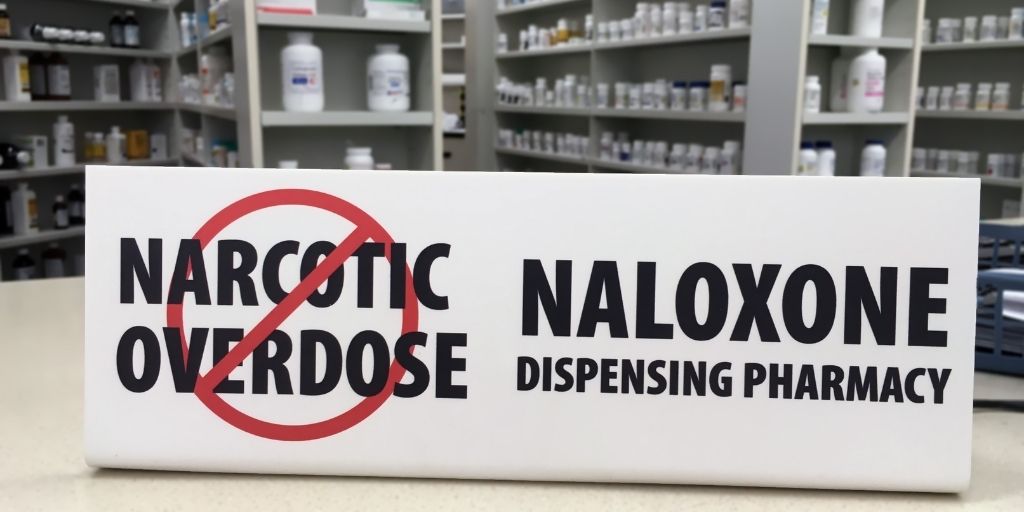
It was a day she would never forget. Tammy came home from work and found her husband slouched in the recliner. She thought he was dozing, but then he didn’t respond when she tried to wake him.
She tried again. Then she noticed his lips had a blue tint to them, and his breathing was extremely slow. She put her hand to his cheek, and his face felt clammy.
He was taking painkillers for a back injury, and Tammy knew he had been taking extra pills here and there – more than the doc had recommended. Recognizing the signs of an opioid overdose, Tammy quickly grabbed the naloxone from her purse and sprayed it into her husband’s nose. She then called 911.
The paramedics told her later that her husband wouldn’t have made it if Tammy hadn’t given him the naloxone.
What is Naloxone and Who Can Administer It?
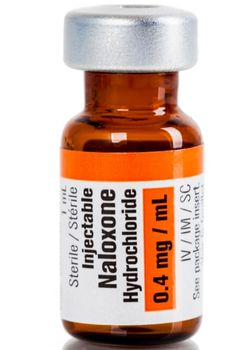 Nearly 80 percent of opioid overdose deaths happen in a non-medical setting. Settings where there are no doctors, emergency techs, or medical supplies. But one thing is available – naloxone.
Nearly 80 percent of opioid overdose deaths happen in a non-medical setting. Settings where there are no doctors, emergency techs, or medical supplies. But one thing is available – naloxone.
Also known by the brand name Narcan, naloxone is a medication that can reverse an opioid overdose. An overdose occurs when opioids fully block the brain’s receptors. This blockage causes breathing to slow down and then stop.
Naloxone clears the brain’s receptors of the opioids so breathing can return to normal. It can literally save the person’s life.
A prescription is not required to purchase naloxone. It is available at most pharmacies, and anyone can carry it. It’s easy to use, so anyone can administer it when someone is experiencing an opioid overdose.
Who Should Carry Naloxone?
You may want to consider keeping naloxone on hand if any of these situations apply to you:
- You or a loved one is taking an opioid pain medication such as Vicodin, OxyContin, Codeine, or Percocet.
- You suspect your loved one may be struggling with opioid addiction or is misusing a prescription or other opioids.
- A loved one has recently received treatment for an opioid addiction.
- You want to be prepared to help save a life in your community if the situation arises.
When Should You Use Naloxone?
If you suspect someone is overdosing from opioid use, give them naloxone. The medication is not known to cause any harm if it turns out the person was not overdosing, so it’s best to go ahead and administer it.
Look for the following symptoms of overdose:
- Slow or erratic breathing, or breathing has stopped
- Non-responsive to their name or firm knuckle-rub to the chest
- Blue lips and fingertips
- Clammy face
- Paleness
- Deep snoring or gurgling sound
- Slow heartbeat or no heartbeat
How to Save a Life With Naloxone
If you suspect an overdose, take the following steps immediately:
-
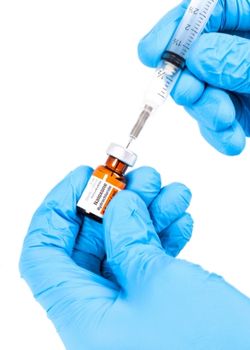 Call 911: If the person is unresponsive, call 911. Try to get their attention by calling their name and telling them you’re going to call 911. Rub their chest firmly with your knuckles to try to wake them. If they are unresponsive to these attempts, call 911.
Call 911: If the person is unresponsive, call 911. Try to get their attention by calling their name and telling them you’re going to call 911. Rub their chest firmly with your knuckles to try to wake them. If they are unresponsive to these attempts, call 911.
Put the person on their side with their legs bent and their head resting on the arm that is on the floor. This position will prevent them from choking if they vomit.
- Administer Naloxone: Depending on the delivery method used, you will administer naloxone in one of the following two ways.
- Spray bottle: Insert the spray nozzle into either nostril and spray the medication into the person’s nose.
- Auto-injector: Remove the injector from its outer case. Remove the safety guard. Place the injector against their outer thigh, through clothing if needed. Press firmly and hold for 5 seconds.
- Apply Rescue Breathing
If the person is not breathing or is struggling to breathe, conduct rescue breathing. Place them on their back. Tilt their head back, pinch their nose, and breathe one slow breath into their mouth every 5 seconds. Their chest should rise and fall with each breath.
- Provide Support
When the person starts breathing on their own, roll them back onto their side and wait for paramedics to arrive. Keep in mind the person may feel sick, confused, and upset. Offer comfort and reassurance while you wait with them for emergency responders. And do not let them use any drugs.
- Follow Up
After they have recovered from the overdose, have an honest but loving conversation with them about the situation. This may be a good opportunity to suggest getting treatment for opioid abuse or addiction.
Get help today at 800-934-1582(Sponsored) to learn about treatment programs for drug and alcohol addiction.
 Eight days ago, Angela was in rehab. Now she’s completely off heroin and has an impressive five weeks of sobriety under her belt. She has a new job and a new apartment. But things are starting to get a little more stressful than she thought they’d be — so many changes, so many new responsibilities.
Eight days ago, Angela was in rehab. Now she’s completely off heroin and has an impressive five weeks of sobriety under her belt. She has a new job and a new apartment. But things are starting to get a little more stressful than she thought they’d be — so many changes, so many new responsibilities.
One night after work, Angela’s stress became too much to handle. She could feel herself slipping. Her mind was overcome by cravings.
In an instant, that familiar voice in her head reappeared. “You just need a little something to take the edge off — something to help you relax. It’s just this one time. No big deal. You can go back to being sober tomorrow.”
Three hours later, Angela woke up in a hospital bed. She’d overdosed on heroin. Fortunately for Angela, she was saved when a neighbor found her unconscious and barely breathing in their apartment complex hallway. EMTs were able to revive her from the overdose.
Many others aren’t so lucky.
The Heightened Risk of an Overdose After Rehab
 When Angela entered rehab, she stopped using opioids. Before rehab, she had been using drugs for two years. During those two years, her body built up a tolerance for opioids. Eventually, she needed a much bigger dose to keep getting the same effect from the drugs.
When Angela entered rehab, she stopped using opioids. Before rehab, she had been using drugs for two years. During those two years, her body built up a tolerance for opioids. Eventually, she needed a much bigger dose to keep getting the same effect from the drugs.
Fresh out of rehab, Angela had been drug-free for weeks. Her body had returned to a normal, healthy state. And that can be dangerous.
Angela’s systems weren’t constantly interacting with and reacting to the effects of opioids. That means she no longer had the same tolerance she’d built up before entering treatment.
But Angela wasn’t thinking about detox, tolerance levels, or the potential of an overdose. So, she took the same dose of heroin she was using right before rehab. And her body went into shock.
She hit her body with an amount of heroin it was no longer used to, and her system couldn’t handle it. So, it started shutting down.
The result: an overdose that nearly killed her.
The Common Story of Overdosing After Rehab
Angela’s situation isn’t unusual. After leaving rehab, many people return to their old habits. And while their habits haven’t changed, their bodies and tolerance levels have.
When people relapse after treatment, they often make the mistake of thinking they can take the same dose they used pre-rehab. They don’t realize that dose could now be fatal, and they end up overdosing.
Some people get lucky and survive the overdose. But many don’t.
Top Reasons for a Post-Rehab Overdose
Angela looked to opioids to help her cope with stress. This is a common reason for overdose after rehab. Whether at home or work, stress builds up, and the person who is addicted feels they can’t cope with everything without using substances.
Here are five other common mindsets that can lead to a post-rehab overdose:
- Just One More Time:
Jeff wanted to take his life in a new direction. He hadn’t taken any pills in weeks.
But, when he ran into an old friend who invited him over, he knew what they would end up doing. “Why not?” he thought. “I might never see him again. One last time can’t hurt.”
But, yes, it can. Jeff no longer has the tolerance for the level of drugs he and his friend used to use. If he takes that amount tonight, there’s a very good chance he’ll overdose.
- Feeling the pain
Devan’s old shoulder injury was flaring up again. After battling with a painkiller addiction, he had been drug-free for six months. But the pain was back.
And he didn’t think he could manage it without those pills.
The problem: If Devan took the same dose of painkillers today that he was taking when he quit six months ago, the amount would kill him.
- Too Strong for Triggers
Sam used to get high every time he went to his cousin’s house. Now, he’s been out of rehab for three weeks and has stayed clean.
But just walking by his cousin’s place makes him want to use. He doesn’t try to avoid the neighborhood — or his cousin.
And the cravings are getting more intense.
If Sam doesn’t find a way to address his triggers and cravings, and gives in to them, he’ll be in danger of an overdose.
- Something Completely Different
Kelly went to rehab to deal with her alcohol addiction. Three months sober, Kelly starts using heroin instead of drinking. But her body isn’t used to this drug.
Because she substitutes one drug for another, Kelly is at high risk for an overdose.
- Feeling Despair
Sobriety has just become too much. Brian is in a deep well of depression and sees no hope.
He decides to take every pill he can find to escape it all with an intentional overdose to end his life.
And the Leading Cause for an Overdose After Rehab…
 Of all the reasons for post-rehab overdose, one of the most common is self-deception. Here’s what that looks like:
Of all the reasons for post-rehab overdose, one of the most common is self-deception. Here’s what that looks like:
“Sure, I had a drug addiction before, but I have control now. This time, I won’t let things get out of hand.”
But this line of thinking shows that things are already out of hand. And a relapse could be (and often is) fatal — especially after rehab.
For information about treatment options for you or a loved one, call 800-934-1582(Sponsored) today.
 Medication-assisted treatment (MAT) has been a life-saving tool for so many people with opioid use disorder. In fact, the most popular medication used in MAT—Suboxone (buprenorphine/naloxone)—is approved and endorsed by the Substance Abuse and Mental Health Services Administration (SAMHSA), the Federal Drug Administration (FDA), and the National Institute on Drug Abuse (NIDA).
Medication-assisted treatment (MAT) has been a life-saving tool for so many people with opioid use disorder. In fact, the most popular medication used in MAT—Suboxone (buprenorphine/naloxone)—is approved and endorsed by the Substance Abuse and Mental Health Services Administration (SAMHSA), the Federal Drug Administration (FDA), and the National Institute on Drug Abuse (NIDA).
Thousands of people say Suboxone literally changed their lives for the better. Surely we’d never see patients facing barriers and stigma related to such a well-researched and highly-endorsed medication – not in this day and age, right?
Wrong.
Despite all the supporting literature and data, clinicians hear horror stories on a weekly basis – stories about pharmacies preventing access to recovery by turning away patients presenting Suboxone prescriptions.
So, what’s the deal?
What is Medication Assisted Treatment?
 Medication-assisted treatment (MAT) is the use of medications, in combination with behavioral therapies, to treat opioid addiction and alcohol dependence. These medications are critical because over two million Americans live with opioid use disorder, which includes prescription opioids and illicit drugs, like heroin.
Medication-assisted treatment (MAT) is the use of medications, in combination with behavioral therapies, to treat opioid addiction and alcohol dependence. These medications are critical because over two million Americans live with opioid use disorder, which includes prescription opioids and illicit drugs, like heroin.
According to SAMHSA, these medications can relieve withdrawal symptoms and reduce the psychological cravings that cause chemical imbalances in the body. MAT also helps to normalize brain chemistry, block the euphoric effects of alcohol and opioids, and normalize body functions without opioid use.
There are three main types of MAT that can be prescribed by a medical provider:
- Medications for alcohol use disorder: the medications used to treat alcohol dependence include acamprosate, disulfiram, and naltrexone.
- Medications for opioid dependence (also called opioid use disorder): these medications include buprenorphine, methadone, and naltrexone
- Opioid overdose prevention medication: naloxone (commonly called its brand name, Narcan) is an opioid overdose drug that can be used to reverse the effects of opioids and save someone’s life.
How Effective is MAT?
MAT is clinically proven to be an effective treatment, with a number of positive outcomes. These medications:
- Reduce the need for detox
- Provide a comprehensive, but tailored, program combining therapy and medication that addresses most patients’ needs
- Improve patient survival
- Decrease illicit opioid use
- Decrease criminal activity
- Improve retention in treatment programs
- Increase a person’s ability to gain and sustain employment
- Improve birth outcomes among pregnant mothers with opioid use disorder.
Why Do Pharmacies Prevent Access to Recovery?
Given how effective and well-endorsed medication-assisted treatment is, you’d think that pharmacies would be happy to stock their shelves with more of the medications (and increase their bottom line). Instead, recent studies have shown that some pharmacies are refusing to stock one medication: buprenorphine.
In a recent AMERSA podcast (The Multidisciplinary Education and Research in Substance Use and Addiction), Dr. Jeffrey Bratberg and his colleagues decided to test the availability of MAT by hosting a phone-based “secret shopper.”
Bratberg, with researchers Dr. Lucas Hill, and Dr. Lindsey Loera, surveyed 800 pharmacies licensed by the state of Texas for the distribution of MAT. During their “secret shopper” experiment, Bratberg and colleagues asked pharmacies for the availability of the most prescribed MAT product, buprenorphine 8/2mg films. When medications were unavailable, researchers asked when it would come back in stock and also asked about the availability of naloxone.
The findings were pretty alarming.
Bratberg and colleagues discovered that:
- Only 34 percent of pharmacies were willing to fill one week of buprenorphine and a naloxone kit
- Chain stores were more likely than independent pharmacies to fill Suboxone prescriptions
- Prescribing just one medication (buprenorphine) didn’t make a big difference, with 42 percent agreeing to fill the prescription
- Even if the medication was out of stock, only 62 percent of pharmacies were willing to order it (and it took more than two days for Suboxone delivery)
- Some pharmacists simply refused to dispense Suboxone altogether
Digging Into Each Pharmacy’s Excuses in Preventing Access to Recovery
 Researchers wanted to understand why the medication was out of stock and why pharmacists were so unwilling to prescribe an FDA-approved medication and therefore prevent access to recovery.
Researchers wanted to understand why the medication was out of stock and why pharmacists were so unwilling to prescribe an FDA-approved medication and therefore prevent access to recovery.
Bratberg and colleagues found the reasoning was simple: stigma and misconceptions.
Some pharmacists held misconceptions, believing MAT could cause euphoria or even lead to misuse. They essentially believed that, since it was an opioid, patients would use it to get high – even though that has been scientifically refuted. Other pharmacists pointed to cost issues saying that they could lose money if they had an excess supply on hand.
Critics say that the pharmacists’ perspectives are grounded in misconception and flawed arguments. Here’s why: Bratberg and colleagues pointed out in the podcast that surely all of these pharmacists had a supply of a highly addictive opioid, oxycodone, meaning the pharmacists’ reasoning was ill-founded.
Unfortunately, the lack of supply issues for MAT isn’t limited to Texas. A similar study in Kentucky found that pharmacists were terrified of DEA involvement. That reasoning does have more of a basis as wholesalers have been criticized for their part in the opioid epidemic by not reporting large orders of opioid medication.
Clearly the reasons that pharmacists prevent access to recovery are nuanced and Bratberg and colleagues say that the reasoning is complex and there needs to be a multidisciplinary approach that finds solutions and enables pharmacists to collaborate with other pharmacists, policy makers, and other MAT providers.
For information about treatment options for you or a loved one, call 800-934-1582(Sponsored) today.

– DEA Administrator Anne Milgram
The chemicals come from China to Mexico. The cartels in Mexico run drug production facilities. They sell deadly, unregulated substances, like fentanyl, on social media in the United States. Thousands of Americans die of drug overdose.
The Emerging Risk of Fentanyl on Social Media
 Between April of 2020 and April of 2021, 100,000 Americans died from drug overdose. Around 75,000 of those deaths were due to opioids, mostly fentanyl.
Between April of 2020 and April of 2021, 100,000 Americans died from drug overdose. Around 75,000 of those deaths were due to opioids, mostly fentanyl.
According to data from Families Against Fentanyl, “the number of deaths from fentanyl between 2020 and 2021 surpassed the number of deaths from suicide, COVID-19, and car accidents.”
Fentanyl is a synthetic opioid originally developed to treat severe pain, specifically breakthrough pain in cancer patients. It is 50 -100 times more powerful than morphine.
Like other opioids, fentanyl overdose causes breathing to stop, which can lead to a coma, brain damage, and death.
The U.S. Drug Enforcement Agency (DEA) has confiscated so many pills containing deadly amounts fentanyl that they’ve issued a public safety alert. The pills are made to look like common drugs such as OxyContin, Xanax, and Adderall.
At least 76 recent fentanyl cases involved the use of social media to traffic the drugs. Dealers use Facebook, TikTok, Snapchat, Instagram, and YouTube to reach customers.
DEA Administrator Anne Milgram says:
Why Fentanyl on Social Media is Overtaking the Market
Fake prescription pills laced with fentanyl look nearly identical to legitimate pills. They closely resemble medications like Vicodin, Xanax, and Percocet.
The DEA reports that people use social media to purchase pills that they think are legit, but the pills can turn out to be deadly. Rather than the medication they were expecting, social media buyers receive fakes containing lethal amounts of fentanyl.
And it’s not just teens, either.
Milgram notes that the drug dealers’ social media strategy is “reaching all age groups—a curious teenager ordering a pill online, a college student trying a pill from a friend, an elderly neighbor searching online for a painkiller.”
She says, “They are using these platforms to flood our country with fentanyl. The ease with which drug dealers can operate on social media and other popular smartphone apps is fueling our nation’s unprecedented overdose epidemic.”
What Can Be Done About Fentanyl on Social Media
 The DEA reports that dealers are use emojis as codes to advertise substances like fentanyl on social media. And Milgram says “social media companies are not doing nearly enough to block the ads for fake pills.”
The DEA reports that dealers are use emojis as codes to advertise substances like fentanyl on social media. And Milgram says “social media companies are not doing nearly enough to block the ads for fake pills.”
Social Media Moderation
Social media companies claim they have tried. They say they have altered algorithms and hired more moderators to look for illegal items for sale.
But law enforcement and families of overdose victims say it’s inadequate. They suggest more parental controls and data-sharing to catch dealers who sell drugs like fentanyl on multiple social media platforms. In many cases, the dealer connects with a buyer on one site but goes to another to complete the deal, and then moves to a third to receive payment.
Decreased Social Media Use
Some suggest a radical idea: Don’t use social media. Block it on kids’ phones. Take their devices away. Many generations have survived without social media. Maybe a step back is what it will take to ensure the next one survives, too.
Safe Prescription Use
Meanwhile, the DEA and other law enforcement officials continue their efforts to get fentanyl off the streets and off social media. The DEA offers the following reminder:
“The only safe prescription medications are prescribed by trusted medical professionals, given by a licensed pharmacist. ‘Prescription drugs’ acquired from other sources should be assumed unsafe.”
If you or a loved one misuses prescription drugs, receiving treatment can be crucial. Many people begin using legitimate pills, but develop a high tolerance that requires more pills than are in their prescription to achieve the same effects. This progression can lead into the purchase of potentially dangerous counterfeit prescription pills online, such as fentanyl on social media.
Call 800-934-1582(Sponsored) to learn more about opioids misuse and addiction treatment.

We know addiction can develop from a number of factors. And we also know the experiences we have during childhood can play a role in who we become as adults.
One of the childhood experiences that can have a huge impact on us as we grow older is emotional neglect. In fact, research shows it can even put us at higher risk for developing an addiction.
What is Emotional Neglect?
 Childhood emotional neglect can occur when parents neglect their children’s emotions and emotional needs.
Childhood emotional neglect can occur when parents neglect their children’s emotions and emotional needs.
This means they do not ask about their children’s feelings, connect with them on an emotional level, or validate their feelings enough.
These parents may be physically present but emotionally unavailable, or they could be so damaged by their own childhood experiences of emotional neglect that they have no idea how to nurture their own children.
Emotional neglect is a form of abuse. Emotional neglect is more difficult to spot than physical abuse, but can be just as damaging.
Who are Emotionally Neglectful Parents?
Jonice Webb describes childhood emotional neglect in more detail in a recent Psychology Today article.
Webb states:
The one failure of the emotionally neglected family is emotional. There may be enough hugs. There may be enough money. There may be enough food and clothing. But this family does not manage to provide enough emotional awareness, validation, compassion, or emotional care to the children.
Emotionally neglectful parents usually do not notice what their kids are feeling and, therefore, may have no idea that they’re neglecting their children’s emotions at all.
Connecting the Dots Between Emotional Neglect and Addiction
It is not uncommon for a person in addiction treatment to have an ah-ha moment where they realize their emotional or physical needs were neglected as children. They see for the first time how this neglect influenced their choices, feelings, and behavior as adults.
Researchers acknowledge that it’s impossible to identify the exact role of emotional neglect and other forms of abuse play in addiction. Dr. Cora Lee Wetherington, the National Institute on Drug Abuse’s Women’s Health Coordinator says:
The sheer weight of the many reports over the years certainly implicates child abuses as a possible factor in drug abuse for many people, but we lack hard data that clearly establish and describe the role of child abuse in the subsequent development of drug abuse. Is child abuse indeed a cause of drug abuse, or is child abuse a marker for other unidentified factors?
Emotional neglect and abuse causes:
- Persistent feelings of fear and a high risk of developing post-traumatic stress disorder (PTSD)
- Hypervigilance
- High risk of developing anxiety or depression
- Learning deficits
- Delayed developmental milestones
- Difficulty processing positive feedback
- Difficulty with social cues and situations
These effects also have a high correlation with addiction. For example, research indicates that 30-59 percent of women in treatment for addiction have PTSD and 55-99 percent of these women have a history of childhood trauma, such as physical or emotional neglect.
What Are the Signs of Emotional Neglect?
Webb identifies eight signs of emotional neglect in a family:
- Family conversations tend to focus on surface-level topics, meaning they are seldom about emotional, meaningful, painful, or negative things.
- You sometimes feel unexplained resentment or anger towards your parents.
- You go to family events with hopes of having a good time, but oftentimes, you come away feeling empty or disappointed.
- Interpersonal problems in the family are generally ignored instead of acknowledged and discussed.
- It feels like your siblings are competing with each other, but you’re not sure for what.
- Affection in your family is expressed through acts of service (i.e., doing things for people) and not through emotional expression.
- Emotion, in general, seems to be off-limits in your family.
- When you’re with your family, you feel lonely or left out.
If you identify with any of the above signs, here’s the good news: The way you were raised does not have to dictate the rest of your life.
Can You Repair the Effects of Emotional Neglect?
 While you cannot change the family you were born into, you can start by working on yourself, according to Webb. She recommends selecting an item from the list that applies to your family, and then to start behaving the opposite way.
While you cannot change the family you were born into, you can start by working on yourself, according to Webb. She recommends selecting an item from the list that applies to your family, and then to start behaving the opposite way.
Webb also recommends making an effort to:
- Talking to others about meaningful things instead of only talking about superficial things
- Fighting against feeling guilty for your emotions
- Focusing on self-care when with your family
- Expressing your affection and warmth toward others through words, rather than actions
By taking these first steps, you will be better able to offset the impact the emotional neglect you experienced will have on your life moving forward.
Call 800-934-1582(Sponsored) today to learn more about treatment options.
